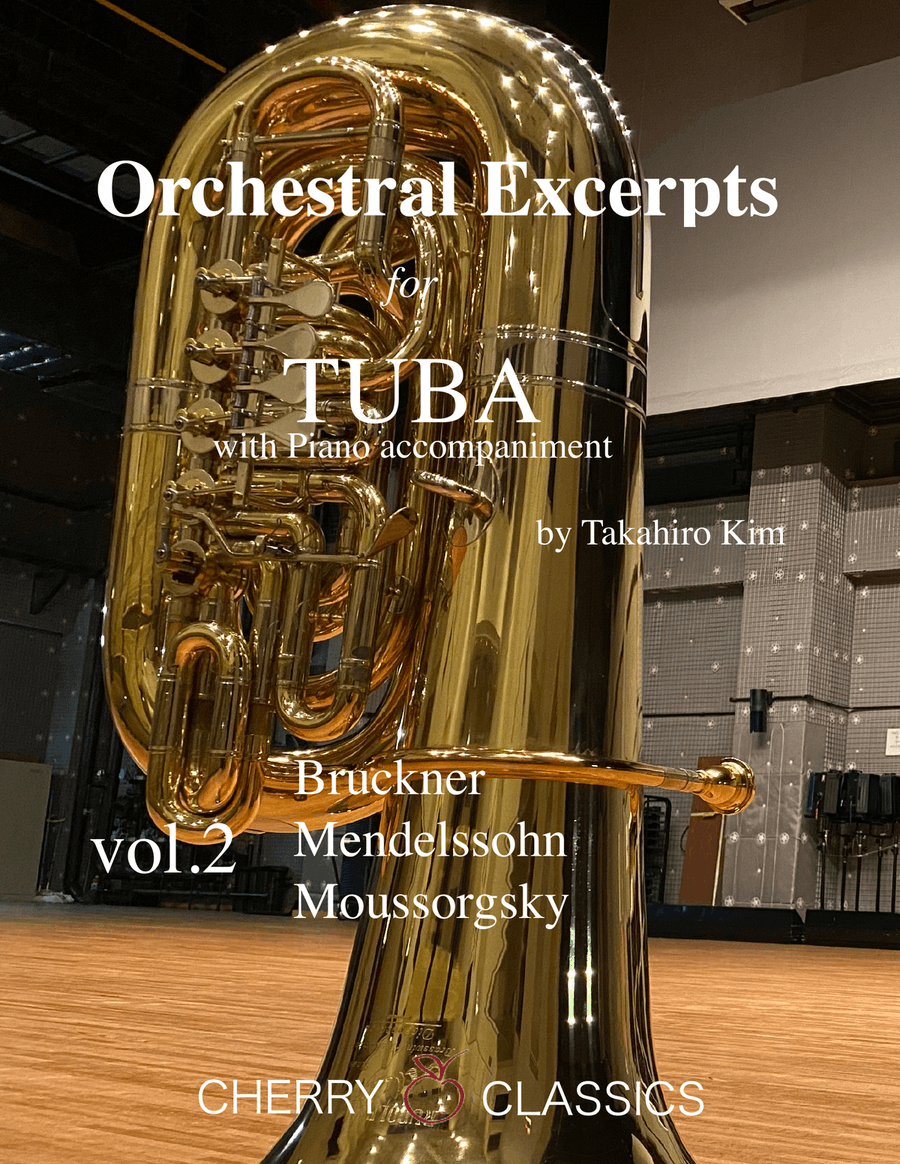Full Orchestra - Level 5 - Digital Download SKU: A0.1036106 Composed by Various. Arranged by Takahiro Kim. Classical,Romantic Period. Score and parts. 116 pages. Gordon Cherry #641207. Published by Gordon Cherry (A0.1036106). Below is a description of Volume 2 of Orchestral Excerpts for Tuba with Piano accompaniment arranged by Japanese Tubist Takahiro Kim. This new edition includes the following music: Piano accompaniments to the orchestral excerpts from major works for Tuba. This edition does not include a separate Tuba (the tuba part is in the piano accompaniment part though), however, if the performer needs these parts, they are readily available in the Complete Collection of Low Brass Orchestra Music compiled by Gordon Cherry. Many tuba players (at any level) will play in an orchestra or practice the tuba part of a piece as part of their studies. You will also have the opportunity to listen to reference recordings and study those pieces. In this textbook, I have arranged the tuba part so that it can be played with piano accompaniment. Some pieces are difficult to understand from the orchestral soundtrack alone. I have transcribed the piano part as simply as possible. By doing so, you will be able to clearly understand the relationship between the phrases, accompaniment patterns, harmonies, rhythms, and the relationship between the tuba part and the orchestra. I have included many parts other than the ones to be played in the audition pieces. This is because I want you to practice with a strong image of the musicality and sound feeling used in those pieces. I think you will be able to fully understand the outline of the music. Bruckner: Symphony No. 4-9 - You may only have the opportunity to practice the sections for auditions, such as No. 4 (4th movement) and No. 7 (4th movement). However, by practicing other sections as well, you will be able to study the ideal style, sounds, and harmonies that are appropriate for Bruckner's symphonies. By referring to the piano part, you will be able to understand the harmony very quickly. Mendelssohn: A Midsummer Night’s Dream Overture - If you have a chance to practice with a pianist, try practicing at a slower tempo so that you can visualize the ideal tone and nuance of articulation for bass tuba while feeling the harmonic background of the piano playing. Of course, mp3 files will also help you. Mussorgsky: Pictures at an Exhibition - Each section is very unique, so it is best to practice with a clear purpose. In Bydlo, everything is arranged for concert use. So it will be possible to play it in a real concert or orchestral situation. If you play with the accompaniment in mind, your approach to the phrases will surely change. I recommend that you practice all sections of Pictures at an Exhibition with a pianist at a slow tempo. When you listen to recordings or practice by yourself, it may be difficult to pay attention to each harmony. Knowing a clear harmonic standard will help you take your sound and articulation in a more ideal direction.
